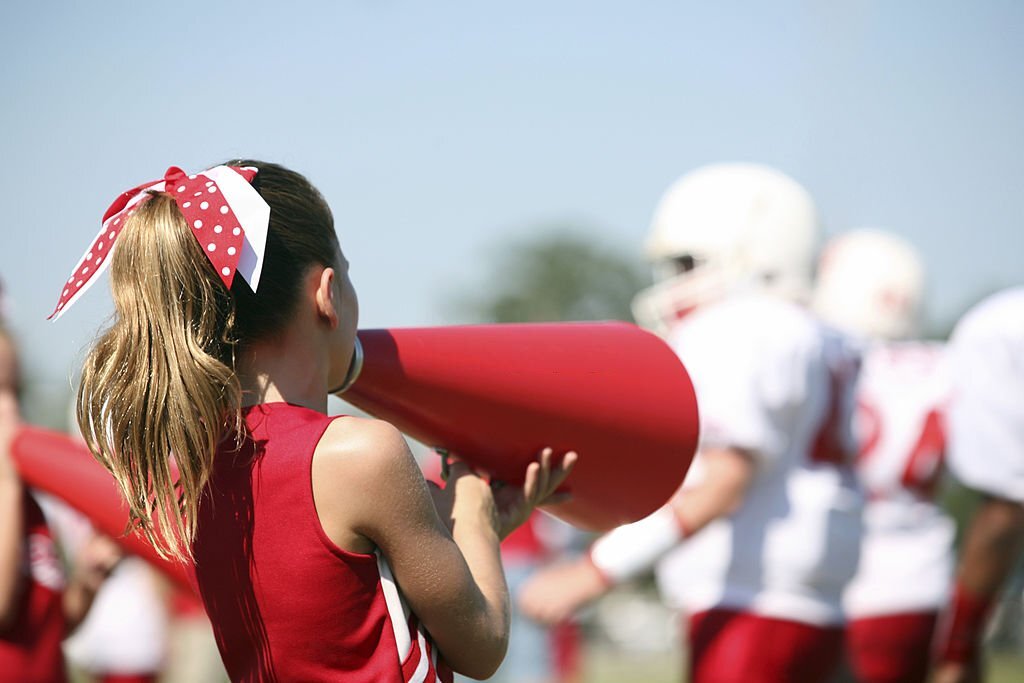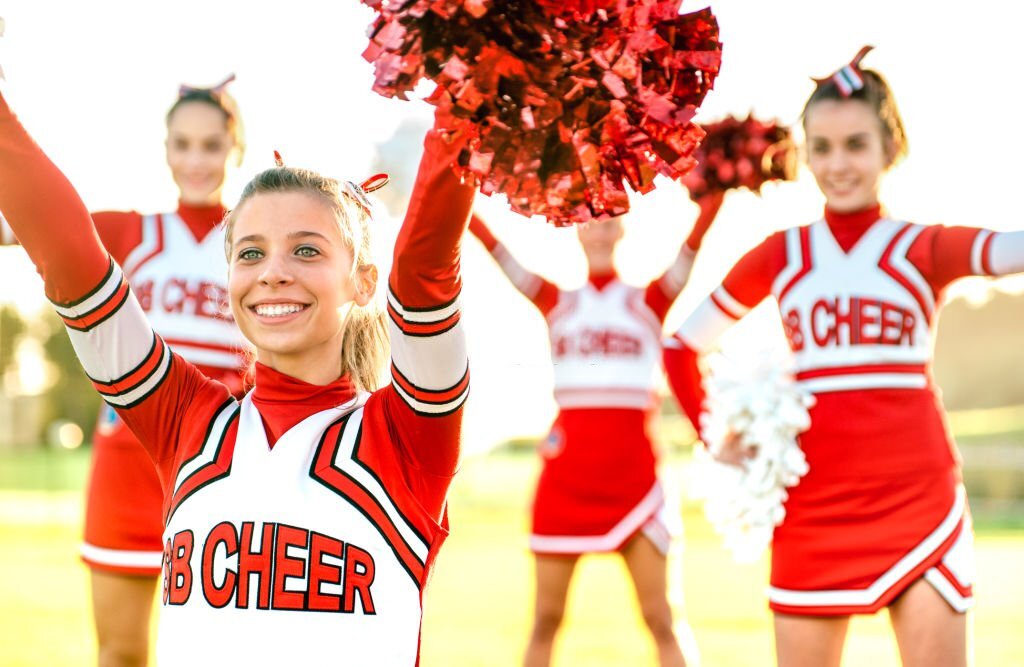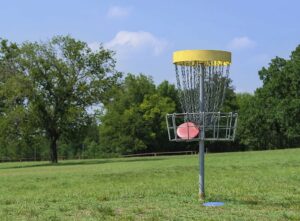Cheerleading has long been a staple of school spirit and athletic support. However, the question of whether cheerleading should be considered a sport has sparked heated debates among sports enthusiasts and athletes alike. In this blog post, we will explore the criteria that define a sport, examine arguments against cheerleading as a sport, and present compelling reasons why it should indeed be recognized as an Olympic sport. Join us on this journey to unravel the truth behind this ongoing debate.
What Defines a Sport?
Athlete or not, many individuals have debated whether cheerleading should be considered a sport in the Olympics. The cheerleading community argues that it meets the criteria for being classified as a sport due to its physicality and athleticism. With demanding routines that require strength, flexibility, and coordination, cheerleaders fulfill the athletic requirements necessary for sporting recognition.
Cheerleading showcases physicality, competition structure, and community organization – factors that define many established sports today.
Additionally, competition and rules play crucial roles in defining a sport. Cheerleading competitions involve teams competing against each other based on predetermined rules and scoring systems. The focus on performance excellence and judges’ evaluations aligns with traditional sports competitions.
Furthermore, the presence of an organized governing body is another aspect to consider when determining if something is a sport. Cheerleading organizations exist at various levels with standardized guidelines to ensure fair play and safety within the discipline.
While there may be ongoing debates about whether cheerleading should be included in future Olympic events or recognized as an official Olympic sport category outright; one cannot deny its physicality, competition structure, and community organization – factors that define many established sports today

Physicality and Athleticism
Strength and conditioning are paramount in the world of cheerleading. Athletes in this community undergo rigorous training to build their physical power and endurance, allowing them to execute complex stunts and flips with ease. Flexibility and agility are equally important, as cheerleaders need to perform precise movements and contortions with grace and precision. Finally, stamina and endurance play a crucial role in cheerleading, as athletes must maintain high energy levels throughout long routines that demand constant movement and intense physical exertion.
Competition and Rules
Routine execution and precision are crucial in cheerleading competitions. Athletes must perform their routines with utmost accuracy, synchronizing their movements and stunts. Judges evaluate not only the difficulty level of skills performed but also how well they are executed. The cheerleading community holds high standards for precise and flawless performances.
Judging criteria in cheerleading competitions consider various factors such as technique, creativity, showmanship, energy, and synchronization among team members. It goes beyond just physical ability; a winning routine showcases exceptional teamwork and artistic flair. Athletes are evaluated holistically to ensure a fair assessment that reflects the true essence of cheerleading as both an athletic endeavor and an art form within the sporting world.
Organized Governing Body
The International Cheer Union (ICU) has made significant strides in elevating cheerleading to the status of a recognized sport. With its tireless efforts, cheerleading has gained recognition by the International Olympic Committee (IOC), marking a major milestone for the sport and its dedicated athletes. Alongside this recognition, the ICU is actively working towards developing competitive standards that ensure fair and consistent judging, fostering growth within the cheerleading community.
Cheerleading: A Sport or Not?
Athleticism in Cheerleading: The physical demands of cheerleading cannot be denied. Athletes perform complex stunts, flips, and jumps that require strength, flexibility, and coordination. They train rigorously to build endurance and master difficult routines. With such athleticism involved, it is hard to argue that cheerleading should not be recognized as a sport.
Competition and Rules in Cheerleading: Competitive cheerleading has become increasingly popular over the years, with teams competing at local, national, and international levels. These competitions have strict rules and guidelines that teams must follow regarding routine difficulty, execution, timing, and safety precautions. Just like any other sport’s competition standards are set for fairness and judging accuracy; so too are those in cheerleading.
Governing Body for Cheerleading: In recent years there has been an effort to establish a governing body specifically for cheerleading – the International Cheer Union (ICU). This organization works towards recognizing cheerleading as a legitimate sport worldwide by promoting standardized rules across nations. Their aim is to secure recognition from Olympic committees around the world so that one day we might see cheerleaders stepping onto the Olympic stage.
Athleticism in Cheerleading
Physical Demands and Conditioning: Cheerleading requires a high level of physical fitness and stamina. Athletes must engage in rigorous training to build strength, flexibility, and endurance. They undergo intense conditioning exercises such as running, weightlifting, and plyometrics to prepare for the demanding routines.
Acrobatics and Gymnastics Skills: Cheerleaders showcase their agility by incorporating acrobatic moves into their routines. These skills include tumbling, stunts, jumps, and intricate lifts. Athletes devote countless hours perfecting these techniques through practice sessions that focus on balance, coordination, and precision.
Strength and Endurance Training: To execute complex cheerleading maneuvers with ease, athletes need both strength and endurance. Strength training involves lifting weights to build muscle power while endurance training focuses on activities like running or cycling to improve cardiovascular fitness. This combination enables cheerleaders to perform at their best throughout long competitions.
Competition and Rules in Cheerleading
Different Types of Cheerleading Competitions:
- All-Star Competitions: These competitions involve teams from different cheerleading gyms, showcasing their skills and routines. They are usually judged based on execution, difficulty level, synchronization, and overall performance.
- Collegiate Competitions: Held among college cheerleading teams, these events emphasize school spirit and showcase the athletes’ skills in stunts, tumbling, dance routines, and crowd involvement.
Scoring Systems in Cheerleading Competitions:
- Point System: Judges assign points for various aspects such as difficulty of stunts or tumbling passes. The team with the highest total score wins.
- Difficulty Levels: Teams can earn points based on the difficulty of their routine elements or skills performed during the competition.
Safety Regulations for Competitive Cheerleading:
- Age Restrictions: There are specific age divisions to ensure that athletes compete against others within a similar skill level range.
- Safety Guidelines: Strict safety guidelines must be followed to prevent injuries during routines. This includes proper training techniques for stunting and tumbling as well as mandatory use of mats and safety equipment.
Governing Body for Cheerleading
The International Federation of Cheer (IFC) serves as the global governing body for cheerleading, overseeing competitions and promoting the sport internationally. In the United States, the National Governing Body for cheerleading is the United States All Star Federation (USASF), which regulates competition rules and safety standards within the country. The recognition of cheerleading as a sport by the International Olympic Committee (IOC) remains a topic of debate, with ongoing discussions about its inclusion in future Olympic Games.

Arguments Against Cheerleading as a Sport
Lack of Physical Contact: One argument against considering cheerleading as a sport is the perceived lack of physical contact. Unlike traditional sports such as football or basketball, cheerleading does not involve direct physical competition with opponents. Instead, cheerleaders primarily focus on coordinating routines and performing choreographed stunts that do not require direct contact with other players.
Subjectivity of Judging: Another point of contention is the subjectivity involved in judging cheerleading competitions. Unlike sports like swimming or track and field, where objective criteria such as time or distance determine winners, judging in cheerleading often relies on subjective evaluation of factors like energy, enthusiasm, and synchronization. This subjectivity can lead to debates about fairness and undermine the credibility of considering cheerleading a sport.
Perceived Lack of Skill Level: Critics argue that compared to more traditional sports, cheerleading lacks the same level of required skill. They contend that skills like throwing a ball accurately or making split-second decisions under pressure are absent in cheering routines. Consequently, some question whether it meets the necessary criteria for being classified as an Olympic sport alongside disciplines demanding higher levels of athleticism and technical proficiency.
Providing Arguments Proponents Have Made Against Cheer Leading As A Sport
The main arguments seem to be; Due To The Perceive Lack Of Physical Content Can It Be Called A Real Sport? And How About The Subjective Nature Of The Judging? What Is Also Pondered Upon Is Whether Or Not Cheer Leading Requires Enough Skills To Truly Be Considered A Sport Amongst Some Of The Most Athletic Disciplines
Lack of Physical Contact
- Safety concerns: Cheerleading involves stunts and lifts that require physical contact, which can lead to injuries such as sprains, strains, and fractures.
- Limited physical exertion: Unlike traditional sports that involve continuous movement and physical strain, cheerleading is often seen as more of a performance art than a sport due to its emphasis on aesthetics rather than intense physical activity.
Subjectivity of Judging
Difficulty in assessing objective criteria: One of the challenges in judging cheerleading as a sport is the difficulty in assessing objective criteria. Unlike other sports where points can be awarded based on clear-cut measurements like speed or accuracy, cheerleading involves subjective elements that are open to interpretation.
Potential for biased judging: Another aspect of the subjectivity of judging cheerleading lies in the potential for biased judgments. Since judges are human and have their own preferences, there is a risk that personal biases may come into play when evaluating performances.
Inconsistencies in scoring: The subjectivity of judging also leads to inconsistencies in scoring. Different judges may interpret routines differently and assign scores accordingly, resulting in discrepancies between evaluations. This lack of consistency undermines the credibility and fairness of cheerleading competitions.
- Objective criteria assessment
- Potential bias
- Inconsistent scoring
Perceived Lack of Skill Level
Viewed as primarily entertainment-focused, cheerleading has often been disregarded as a legitimate sport. Critics argue that the ‘easy’ routines performed by cheerleaders lack the physicality and complexity seen in other sports. This perception contributes to the belief that cheerleading has a less athletic image compared to traditional Olympic sports. However, those who underestimate the skill level required fail to recognize the strength, coordination, and precise timing needed for successful routines.
Arguments in Favor of Cheerleading as a Sport
Evolving Athleticism in Cheerleading:
Over the years, cheerleading has evolved from simply leading chants on the sidelines to a highly athletic and physically demanding activity. Today, cheerleaders perform intricate stunts, tumbling passes, and complex routines that require strength, agility, and precision. The level of athleticism displayed by cheerleaders is comparable to many other recognized sports in the Olympics.
Standardization of Rules and Regulations:
In recent years, there has been a push for standardization of rules and regulations in competitive cheerleading. Organizations like the International Cheer Union (ICU) have worked towards establishing guidelines that ensure fairness and safety during competitions. By adopting strict criteria for scoring and performance requirements, cheerleading meets the criteria necessary to be considered a sport.
Growing Popularity and Participation:
Cheerleading’s popularity continues to rise both at an amateur level as well as professionally. More individuals are participating in organized teams or clubs dedicated solely to competitive cheerleading. With its increasing global presence and passionate following worldwide, it is evident that not only does cheerleading possess all the elements of a sport but also provides opportunities for athletes who excel in this discipline.
Evolving Athleticism in Cheerleading
Incorporation of complex gymnastic skills has become a defining aspect of cheerleading, elevating its athleticism to new heights. Cheerleaders now execute intricate flips, twists, and stunts that require exceptional body control and agility. Alongside these demanding physical feats, cheerleading also emphasizes the development of strength and endurance to perform routines with precision and energy.
Teamwork and synchronization are paramount in modern cheerleading. Gone are the days when individual performances took center stage; today’s routines focus on seamless coordination among team members. Each member plays a crucial role in executing synchronized movements while maintaining perfect timing with their teammates. The emphasis on teamwork not only showcases athletic prowess but also fosters strong bonds among team members, enhancing unity and spirit within the sport.

Standardization of Rules and Regulations
The standardization of rules and regulations is crucial for the recognition of cheerleading as a sport in the Olympics. To ensure fairness and consistency, it is necessary to establish scoring systems and criteria that accurately evaluate cheerleading performances. Adherence to safety guidelines must also be prioritized to protect the athletes from potential injuries. Additionally, having judging panels with expertise in cheerleading is essential to maintain credibility and uphold standards.
- Establishment of scoring systems and criteria
- Adherence to safety guidelines
- Judging panels with expertise in cheerleading
Growing Popularity and Participation
Increased number of competitive cheerleading events has contributed to the growing popularity and participation in the sport. With more opportunities for teams to showcase their skills, athletes are motivated to train harder and elevate their performances. Additionally, “All-Star” cheerleading programs have gained significant traction, attracting both young enthusiasts and experienced athletes looking for a competitive outlet outside of school or college settings.
In the age of social media, cheerlebrities have emerged as influential figures in the world of cheerleading. These individuals gain fame through their exceptional skills, captivating routines, and engaging personalities showcased on platforms like Instagram and TikTok. Their rise to stardom has further fueled interest in cheerleading among aspiring athletes seeking recognition on a broader scale.











